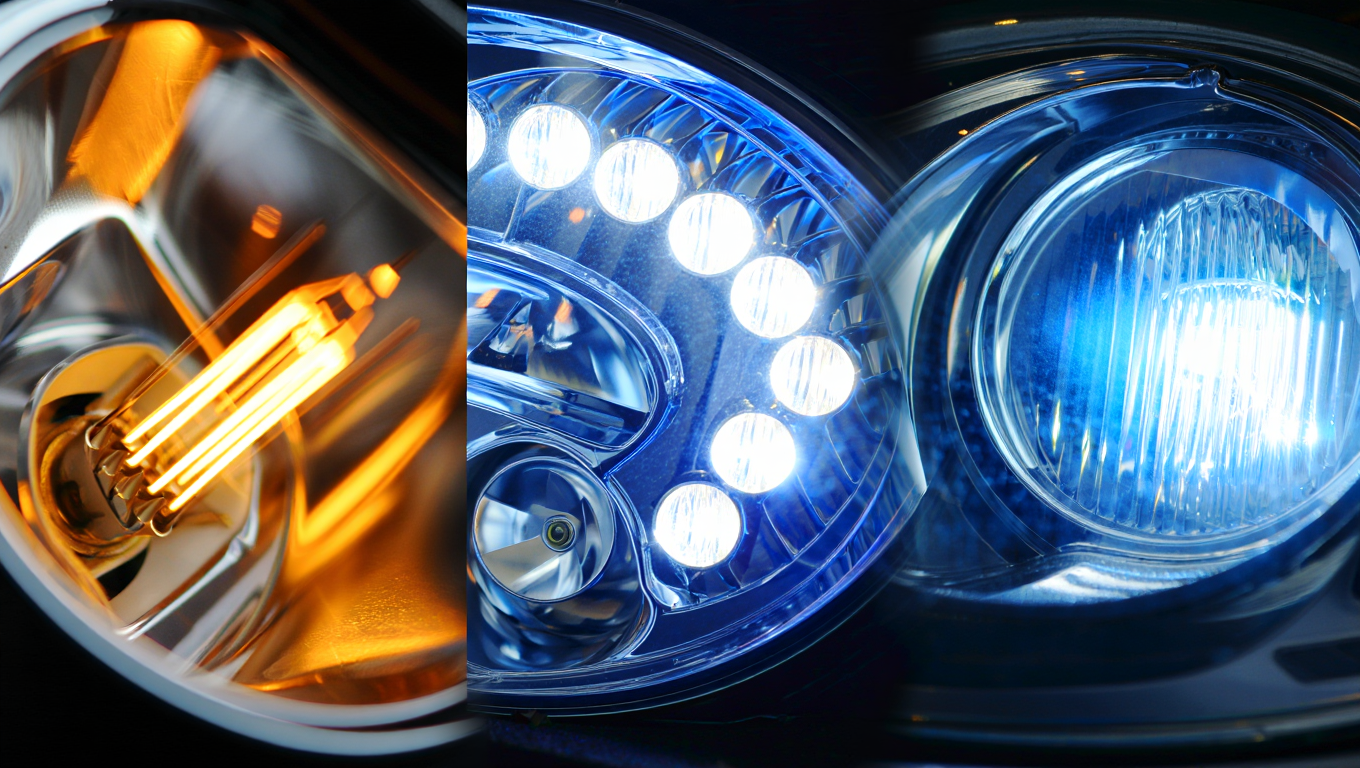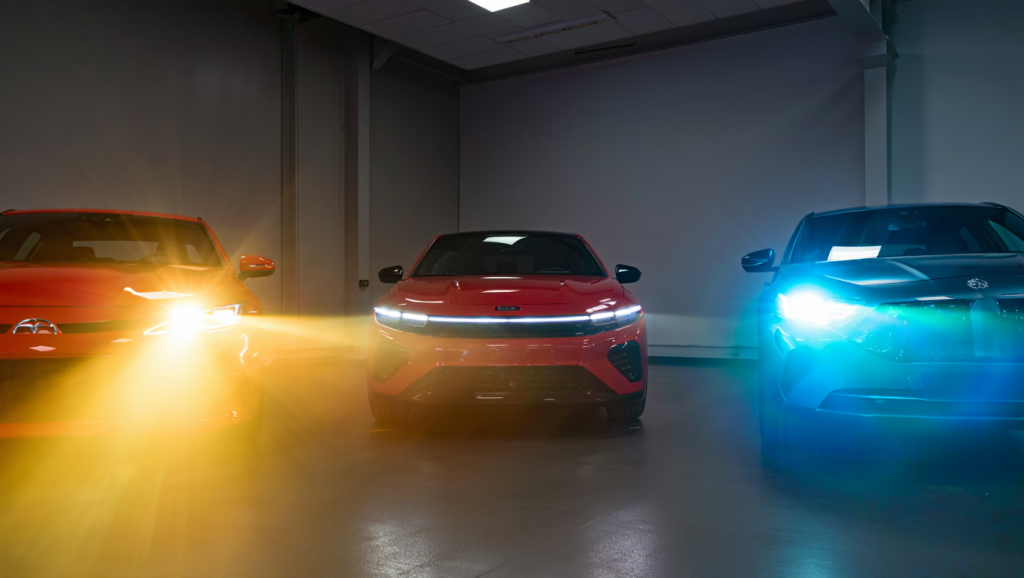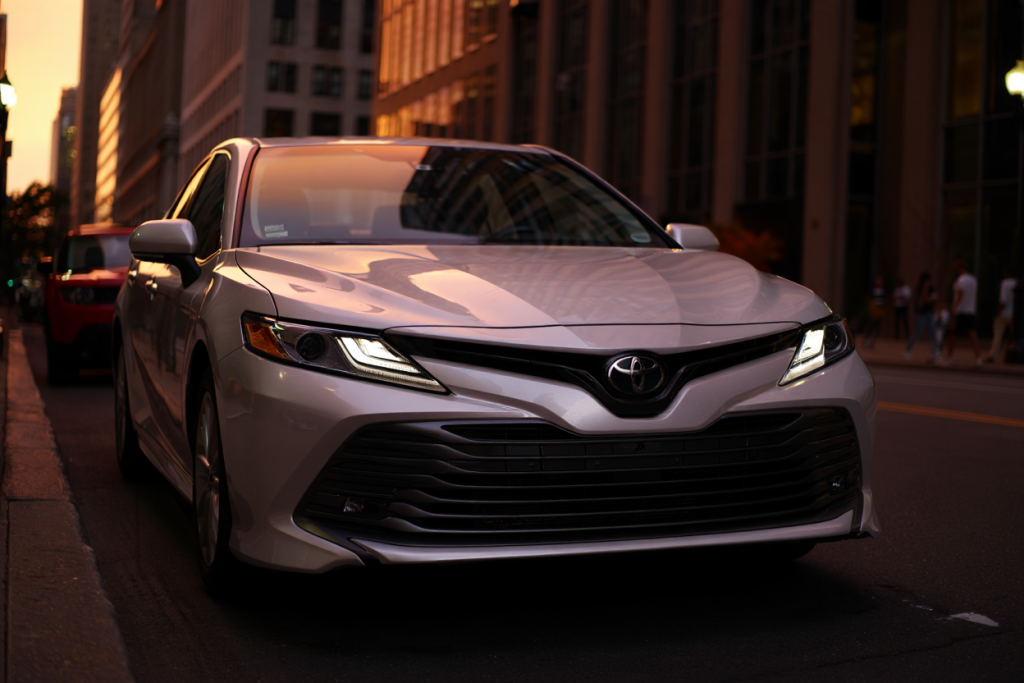Headlights are a critical safety component of your car, providing visibility during nighttime driving, rain, fog, or snow. Choosing the right type—halogen, LED, or HID—can affect brightness, energy efficiency, lifespan, and overall driving safety.
This guide will break down the differences between halogen, LED, and HID headlights, their pros and cons, cost considerations, performance comparisons, common mistakes, and maintenance tips. By the end, you’ll know which headlights suit your driving style and vehicle best.
How Headlights Affect Driving?
Headlights do more than just illuminate the road—they improve reaction time, reduce accidents, and increase your car’s visibility to other drivers.
Purpose of Headlights
Headlights help drivers see the road ahead in low-light conditions and alert other drivers to your presence. Properly functioning headlights reduce fatigue, improve visibility in adverse weather, and increase safety.
Consequences of Poor Headlights
- Reduced nighttime visibility
- Increased risk of accidents
- Glare or uneven illumination for oncoming traffic
Choosing the right type of headlight improves both performance and safety.
Halogen Headlights
Halogen headlights are the most traditional type, used in most vehicles for decades.
What Are Halogen Headlights?
Halogen bulbs are a type of incandescent lamp with halogen gas, producing a warm yellow-white light. They are easy to replace and widely available.
Pros of Halogen Headlights
- Affordable: Low initial cost ($15–$30 per bulb)
- Easy replacement: Compatible with most vehicles
- Reliable: Decades of proven performance
Cons of Halogen Headlights
- Shorter lifespan: Typically 450–1,000 hours
- Lower brightness: Less illumination compared to LED or HID
- Energy inefficient: Higher power consumption
LED Headlights
LED (Light Emitting Diode) headlights are a modern alternative with high efficiency and long lifespan.
What Are LED Headlights?
LEDs produce light through semiconductor technology, converting electricity into light without heating a filament. They emit bright, white light and use less energy.
Pros of LED Headlights
- Long lifespan: Up to 25,000 hours or more
- Energy efficient: Lower power draw, improving fuel efficiency slightly
- Brighter and whiter light: Better visibility and modern appearance
- Compact design: Allows flexible headlight shapes
Cons of LED Headlights
- Higher cost: $50–$200 per bulb or module
- Complex installation: May require adapters or conversion kits
- Heat management needed: Requires proper cooling to avoid failure
HID Headlights
HID (High-Intensity Discharge) or Xenon headlights produce very bright, bluish-white light using an electrical arc between electrodes.
What Are HID Headlights?
HID bulbs contain xenon gas and produce light by creating an electric arc. They are brighter than halogen and some LED bulbs, offering better long-range visibility.
Pros of HID Headlights
- Very bright light: Excellent for nighttime and long-range visibility
- Long lifespan: Around 2,000–3,000 hours
- Energy efficient: Less power than halogen for comparable brightness
Cons of HID Headlights
- High cost: $100–$300 per bulb, plus ballast
- Glare for oncoming traffic: Improper alignment can be blinding
- Longer warm-up time: Takes a few seconds to reach full brightness
- Complex installation: Requires ballasts and precise alignment
Headlight Comparison: Halogen vs. LED vs. HID

Comparing these headlights side by side helps you choose the right type for your vehicle.
| Feature | Halogen | LED | HID |
| Lifespan | 450–1,000 hours | 25,000+ hours | 2,000–3,000 hours |
| Brightness | Moderate | High | Very High |
| Energy Efficiency | Low | High | Moderate |
| Cost | Low ($15–$30) | Medium–High ($50–$200) | High ($100–$300+) |
| Installation | Easy | Moderate | Complex |
| Warm-up Time | Instant | Instant | 1–2 seconds |
| Appearance | Yellow-white | Bright white | Bluish-white |
Which Headlight Should You Choose?
When Halogen Makes Sense
- Budget-conscious drivers
- Older vehicles without LED or HID compatibility
- Drivers who replace bulbs regularly
When LED Makes Sense
- Drivers seeking long-lasting, energy-efficient, and bright headlights
- Modern vehicles designed for LED integration
- Those prioritizing aesthetics and lower maintenance
When HID Makes Sense
- Drivers needing very bright, long-range illumination
- Nighttime highway or rural driving
- Vehicles compatible with HID conversion kits
Common Mistakes Car Owners Make
Installing the Wrong Bulb Type
- Using incompatible LEDs or HIDs can cause flickering or electrical issues.
- Always consult your vehicle manual before upgrades.
Improper Alignment
- Misaligned headlights reduce visibility and create glare for other drivers.
- Adjust or have a professional align after installation.
Ignoring Maintenance
- Dirt, fog, and oxidation on headlight lenses reduce brightness.
- Regular cleaning and lens restoration improve performance.
Overlooking Color Temperature
- Too blue or too white light can reduce contrast in fog or rain.
- Aim for 4,000–6,000K for optimal balance between visibility and safety.
Maintenance Tips for Headlights
Clean Headlight Lenses
- Use car-safe cleaners and microfiber cloths to prevent scratches.
- Remove fogging or oxidation with lens restoration kits.
Inspect Bulbs Regularly
- Check for dimming, flickering, or discoloration.
- Replace bulbs before complete failure to maintain safety.
Ensure Proper Alignment
- Misaligned headlights reduce effectiveness and increase glare.
- Use alignment guides or professional service.
Consider Protective Coatings
- Clear protective films or coatings prevent scratches and UV damage.
Cost and Replacement Considerations
Headlight replacement cost depends on type, vehicle compatibility, and installation.
Typical Costs
- Halogen: $15–$30 per bulb, easy DIY replacement
- LED: $50–$200 per bulb or module, may require professional installation
- HID: $100–$300 per bulb plus ballast, professional installation recommended
Longevity vs. Cost
- LEDs are cost-effective long-term due to their lifespan.
- HIDs offer brightness but higher upfront and maintenance costs.
- Halogen is cheap initially but requires frequent replacement.
Conclusion
Halogen, LED, and HID headlights each have advantages and trade-offs. Halogen is affordable and reliable, LED offers long lifespan and energy efficiency, while HID provides very bright, long-range illumination.
Your choice should depend on driving conditions, budget, vehicle compatibility, and maintenance preferences. Proper installation, alignment, and lens care are essential for maximizing performance and safety.
FAQs
- Are LED headlights better than halogen?
Yes. LED headlights are brighter, longer-lasting, and more energy-efficient than halogen. They provide better visibility, modern aesthetics, and require less frequent replacement. - Can I install HID headlights in a halogen car?
Yes, but it requires a conversion kit with ballasts. Improper installation can cause glare, flickering, or electrical issues. Professional installation is recommended. - How long do HID headlights last?
HID headlights typically last 2,000–3,000 hours. Longevity depends on usage, vehicle voltage stability, and quality of the bulb and ballast. - Do brighter headlights blind other drivers?
Yes, improperly aligned or very high-intensity HID or LED headlights can cause glare. Proper alignment and choosing the right brightness/color temperature help prevent this. - Which headlights are best for city vs. highway driving?
- City driving: Halogen or LED for moderate brightness and cost-effectiveness.
- Highway driving: HID or LED for long-range illumination and better visibility at high speeds.

Benjamin Grey is an automotive engineer and writer at Car Parts Advisor. With years of experience in the automotive industry, he shares expert advice on car parts, maintenance, and repairs to help car owners keep their vehicles running smoothly.





